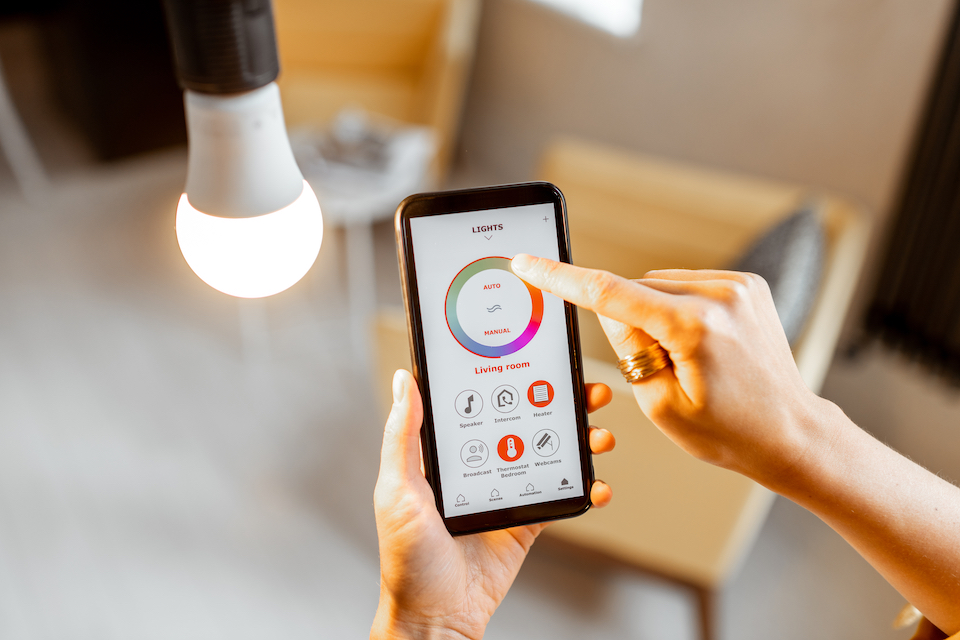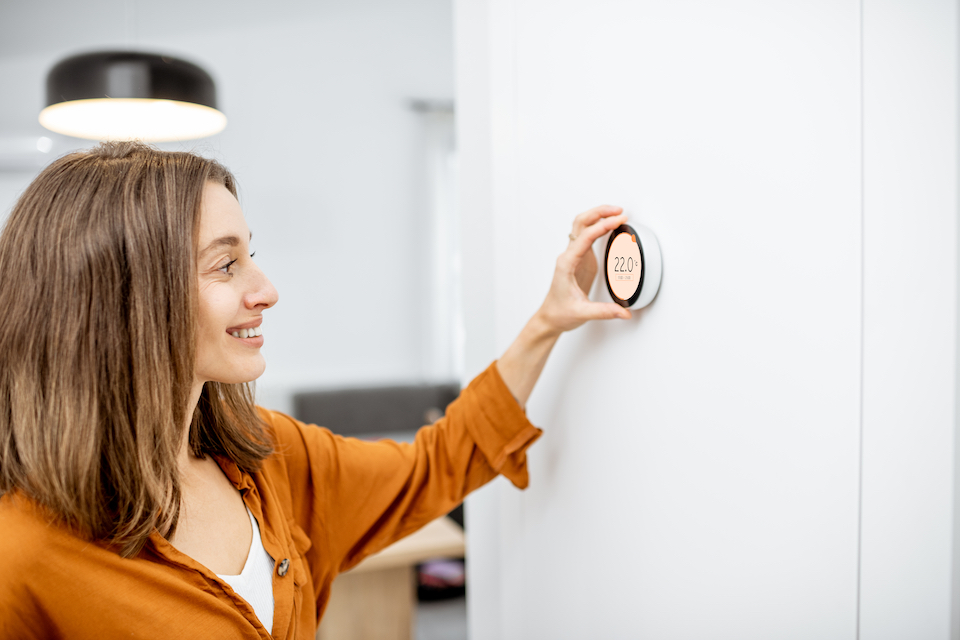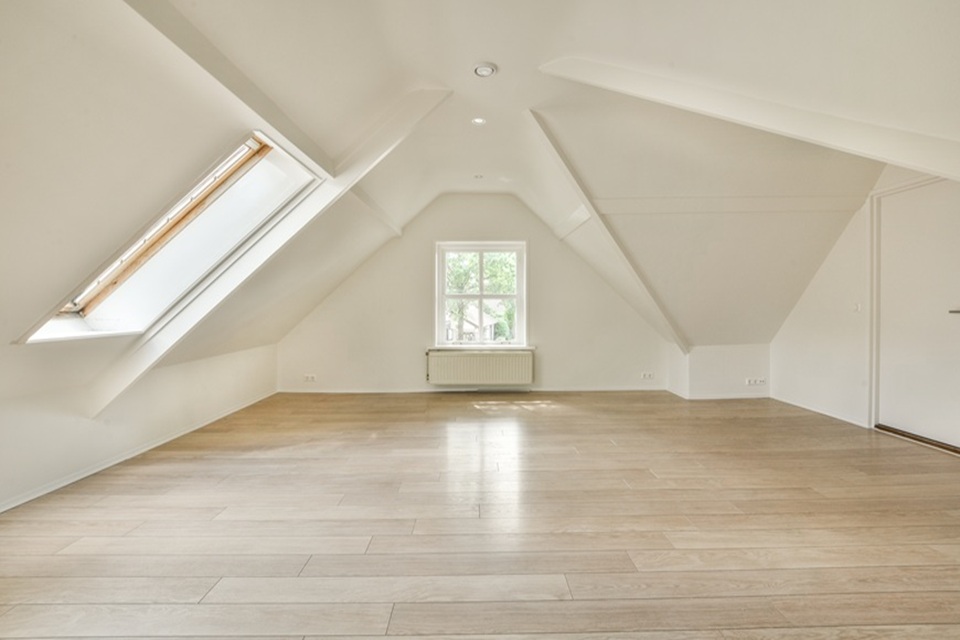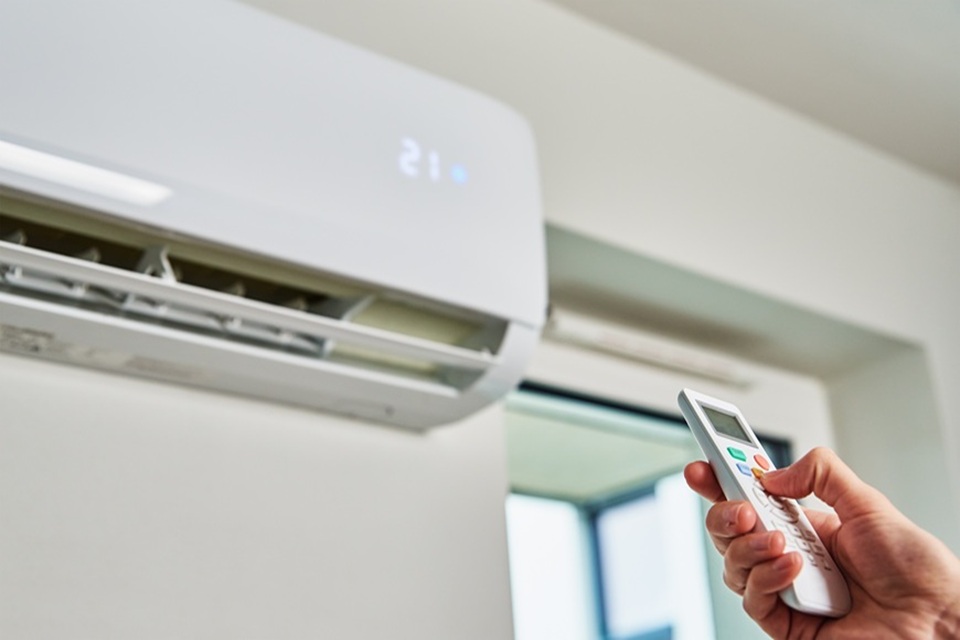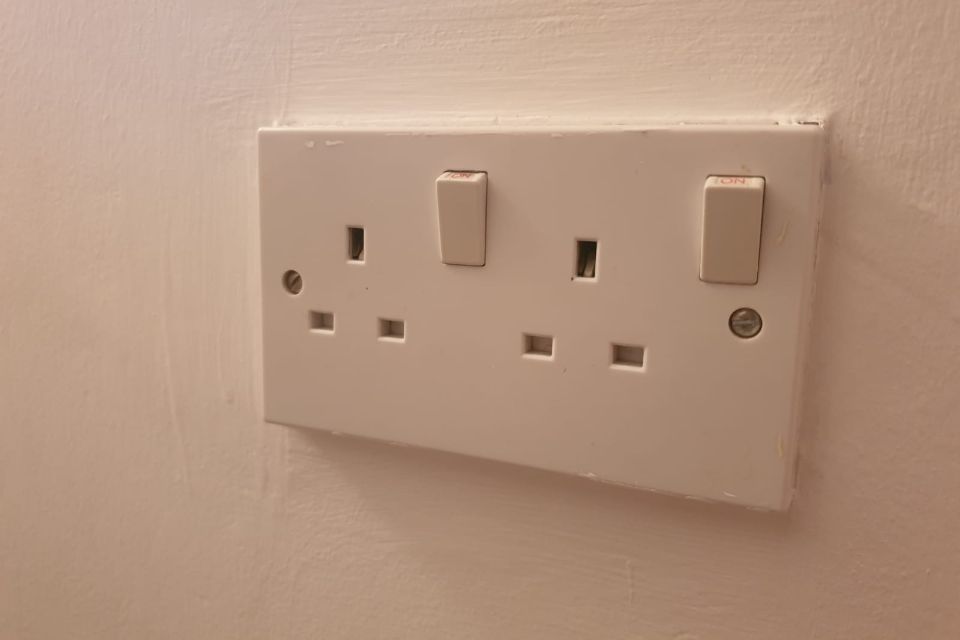How Much Does it Cost to Install Smart Lighting?
Traditional light bulbs operate by turning a switch on and off. They are sometimes wired into a dimmer switch, which allows you to darken or brighten the lights. However, this is generally the extent of traditional home lighting functionality.
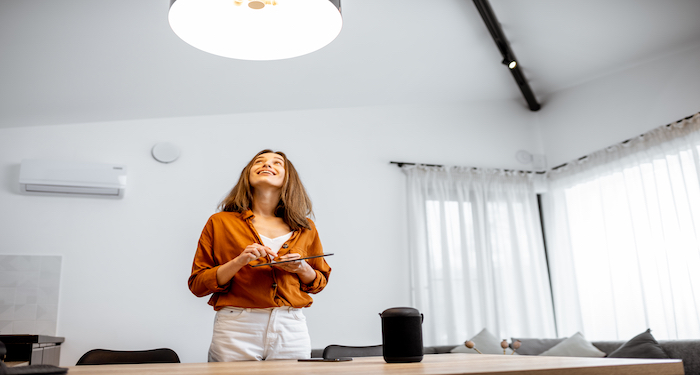
Smart lighting, on the other hand, provides you with far greater control over your lights. Your home's electricity still powers them, but each smart bulb, as well as an LED-integrated fixture, can be controlled wirelessly with your phone or tablet.
Here we will go through how much it costs to install smart lighting, so if you are unsure of where to start when installing smart lighting, then we will go over everything you need to know here!
Smart lighting can be installed as a stand-alone feature or as part of a larger integrated home – the important thing is that it is installed where you need it.
These systems are important in open-plan areas such as kitchens and living rooms, main bedrooms, and exterior zones such as the driveway or garden.
Installing smart lighting in such areas is ideal because you may perform a variety of tasks that necessitate different lighting plans, such as cooking, relaxing, or entertaining – all of which necessitate varying levels of brightness or ambience.
If you choose a fully wired solution, you'll need to work with just an electrician to install the necessary cabling and fixtures to realise your vision for different lighting zones.
This is more common in new construction homes, built from the ground up and can accommodate the cabling more easily.
If your budget does not allow for a whole-house incorporated lighting system, it may be worth adding thenecessary cabling if you would like to install it later.
So, how much does smart lighting cost?
Because there are so many options, it's difficult to put a price tag on a professional installation. Even a basic home wired network design and implementation could cost upwards of £3,000.
A basic AV installation and a multi-room audio solution will cost about the same. On a practical level, there's little point in considering a home-wide smart lighting installation for less than £10,000.
Because smart lighting systems are customised, putting a price on them can be difficult. DIY options, such as Philips Hue bulbs, can cost as little as £100.
A full house wired solution, on the other hand, can cost anywhere between £5,000 and £10,000 to install. Before you begin work, you should know how far your budget will allow you to go.
Incorporating smart lighting will help to prepare your home for the future, so if you're debating whether to spend an extra few thousand pounds on furnishings or cabling infrastructure, you may decide that it's better to forfeit those decorative pieces for a year or so to build a smarter house.
The number of lights you have or switches in your home will determine how many lights you convert. So, switching ten lights in your home could cost £200 or more, depending on the type of smart lights used and whether you require a home automation hub.
However, by investing in smart lights, you will gain that money back in savings. The average LED light does have a life span of 25,000 hours and can save you hundreds of pounds over the life of the light when compared to traditional lights.
The equipment you choose will have a significant impact on the cost of smart lighting. If you're concerned about cost but still want to take advantage of the savings that LEDs provide, it might be a good idea to use a mixture of smart LEDs as well as regular LEDs.
Smart lighting is something you should consider as an investment and take advantage of the features that will make that investment work much better for you. Improving your lighting could be the first step toward making your home smart.
The best part about smart systems is that you can connect them to a hub if you have a system like Alexa. This means that lighting can be changed with a single command.
Smart Lighting Prices
The table below will break down the costs of installing smart lighting:
| Lighting | Cost of Installing Smart Lighting |
|---|---|
| Basic home wired network design | £3,000 |
| Basic AV installation | £3,000 |
| Home-wide smart lighting | £10,000 |
| Smart bulb | £100 |
| A full house wired solution | £5,000 - £10,000 |
- How Much Does it Cost to Install Smart Lighting?
- What are the Supply Costs for Smart Lighting?
- What are the Additional Costs of Installing Smart Lighting?
- Tradesmen Costs for a Smart Lighting Installation
- How Long Does It Take to Install Smart Lighting?
- Types of Smart Lighting
- How Much Does It Cost to Remove Smart Lighting?
- FAQs
- Sources
What are the Supply Costs for Smart Lighting?
Nothing makes us feel more futuristic than smart lighting. It's wonderful to be able to turn off our lights at the end of the day without having to get out of bed.
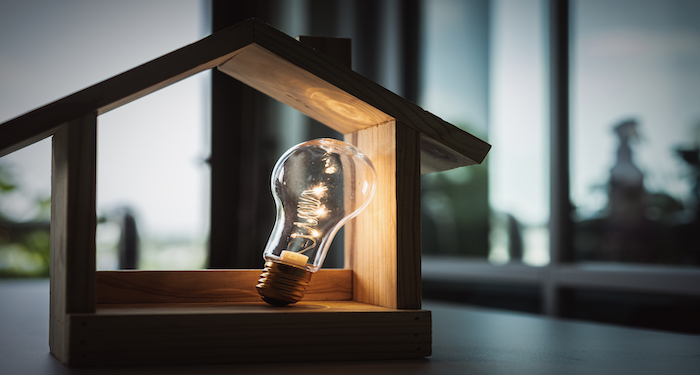
However, as you may have noticed, smart lights are expensive, costing significantly more than standard light bulbs on average.
We will only discuss the supply costs of smart lighting in this section, leaving out the labour costs. So, if you want to install smart lighting yourself, you'll find out how much you'll need to spend here.
The price of smart lights is determined by a variety of factors, including the following:
- Company
- Smart indoor lighting/smart outdoor lighting application
- Wireless vs wired
- A hub is required
- Lamp vs light bulb
Smart bulbs can cost as little as £7 and as much as £50, depending on the brand. A single bulb will cost you around £27.
These smart bulbs can be controlled via an app on your phone or a home automation assistant, as well as your WIFI connection or Bluetooth.
However, if you want to control the lighting system in your home as a group, you may need a hub. This is a device that is connected to your router and allows you to communicate with most of your home's smart bulbs.
One will set you back between £20 and £90. Dimmers may be implemented as part of your smart lighting system.
You can control the lighting of your lights using these smart switches. Smart switches can cost an extra £20 – £60. Normal switches, on the other hand, work just fine if you don't mind using your phone to regulate your lights.
Smart lights typically cost around £42 each. However, there is a wide range within that average, ranging from £2 - £3 for the Cree 60W Bulb to £90 - £100 for the highly desirable Philips Hue Decorative Candle.
If you want a smart home lighting system at the consumer level, your options are limited. The Philips Hue system is one of the more popular options. This is in line with the usual suspects such as Amazon Alexa, Google Home, and Apple Home kit.
The Philips Hue System costs £50, and the Hue lamps range in price from £25 to £50. As with all these consumer units, a dedicated proprietary 'hub' is required to bridge the wireless control of the individual lights to your smartphone or tablet.
With its TRDFRI wireless lighting solutions, IKEA has neatly sidestepped the whole 'smart' lighting issue.
It doesn't require a smartphone or anything like that to function, just a neat wireless remote that costs £15 and a motion sensor that costs £15 for controls.
The table below will break down the supply costs of smart lights:
| Supply | Cost |
|---|---|
| Smart bulb | £7 - £50 |
| Single, smart bulb | £27 |
| Smart hub | £20 - £90 |
| Smart switch | £20 - £60 |
| Smart lights | £42 |
| Cree 60W bulb | £2 - £3 |
| Philips Hue Decorative Candle | £90 - £100 |
| Philips Hue System | £50 |
| Hue lamps | £25 - £50 |
| Wireless remote | £15 |
| Motion sensor | £15 |
What are the Additional Costs of Installing Smart Lighting?
When installing smart lights on your home, you may decide to have other work done to your home, or additional costs may pop up. Here we will go through the additional costs of installing smart lighting and their costs.
Hive Installation
Installing a smart thermostat, such as Hive, is a great way to save money on energy costs and control how your home is heated. You could save up to £120 per year by not needing to heat an empty home.
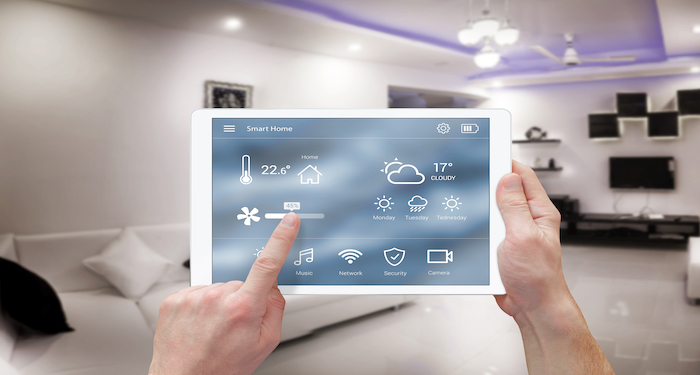
Hive is a product in the smart heating category. If you want to use Hive, all you need to do is install a new thermostat and a smartphone to control it.
Smart heating is a heating system that can be controlled remotely, typically via a smartphone app. If you have an internet-connected smart thermostat, you can control your home's gas boiler from your smartphone.
Installing a smart thermostat can cost between £150 and £280, depending on the brand. You should also consider the builder's daily wage, which can range between £150 and £250 per day, depending on the labourer.
A hive thermostat is usually around £250 - £300, but also, because firms add a profit margin when purchasing the Hive, expect to pay an extra £30 - £75 on top of what you would pay if you purchased it yourself.
Please refer to our guide on hive installation costs for further information.
Rewiring a House
The average cost of rewiring a house varies depending on the type of property and its condition. To improve electrical safety and energy efficiency, older properties may have to be completely rewired. However, if your house was built recently, this may not be necessary.
You'll need to hire a qualified electrician to do this work. They'll remove the old wiring before rewiring your entire house.
This procedure may cause damage to the walls or the floor. This is required for them to have complete access to your home to rewire it safely and securely.
A one-bedroom flat may cost as little as £2000 to £2500 to rewire, whereas a two-bedroom house may cost as much as £3,500 . Larger houses will typically cost more.
Rewiring a three-bedroom semi-detached home will cost between £3000 and £4500, while rewiring a four-bedroom detached home could cost up to £5500.
Electricians typically charge between £125 and £150 per day, so the total labour cost will be determined by the size of the house.
This means that rewiring a one-bedroom flat should cost around £500 to £600, while a two-bedroom terraced house should cost around £625 to £750.
Please refer to our guide on house rewiring costs for further information.
PAT Testing and Electrical Inspection Cost
Electrical safety certificates typically cost between £100 and £350.
A standard-sized home, whether a house or an apartment, should cost between £100 and - 200. The majority of PAT testing fees range between £1 and £2 per device tested.
Some service providers may charge you slightly less than £1 per item. Most testers will charge a minimum fee to ensure that the journey is worthwhile.
If you only need a few appliances tested, you will almost certainly be charged a standard fee in addition to the cost of the appliances tested. An EICR is generated because of recurring inspections of the safety of a property's fixed wiring.
An EICR's primary goal is to protect occupants from electric shocks as well as fires. EICR costs for a typical home will range between £100 and £200.
The larger the property, the more expensive an inspection and report will be. A large school, for example, would need to budget between £3,000 and £5,000 for an electrical installation condition report.
Please refer to our guide on electrical safety certificate and pat testing costs for further information.
Smart Home
Smart thermostats are regularly used in tandem with other smart home devices. You can, for example, connect a Hive smart thermostat to an Amazon Alexa device and control the heating with your voice. The same devices can be used to control lighting, TVs, speakers, and doorbells.

Smart thermostats and appliances are intended not only to make consumers' lives easier but also to increase home energy efficiency. Assume you forget to turn off the lights and TV before leaving for work.
In that case, you can use your smartphone to turn them off as soon as you notice them, preventing you from wasting electricity during the day because no one is at home.
Smart home products range in price from £10 for a speech plug to £500 - £600 for a CCTV system. For less than £100, you can outfit your home with a variety of useful features that control lights as well as other electronic devices.
Location
The cost of repairing chimney flashing is determined by your location in the United Kingdom. Due to higher business costs, such as insurance and business premises, this service will be more expensive in London and the southeast.
Although the north of England, the Midlands, and some rural areas of Wales and Scotland will be less expensive, the cost of repairing a chimney flashing in some large cities may be higher.
Get up to four quotes from near the area chimney repair companies to get an idea of the average cost.
Minimum Charge
In some cases, labourers/companies may charge a minimum fee. This could be added to the final cost or included in the total bill. If you were charged with each day, it wouldn't make a difference if it took a day and four hours or a day and seven hours because you'd be charged for two days' worth of labour.
Duration
The higher the labour cost, the longer it takes to repair chimney flashing. The longer the hiring time frame, however, the more you will pay, with some homeowners having to employ repairers for a few days while others must hire them for several weeks or months.
Tradesmen Costs for a Smart Lighting Installation
To have smart lighting installed in your home will require an electrician to come into your home and fit this for you. Here we will go through the different labour costs to install smart lighting so you know what to expect when an electrician comes into your home.
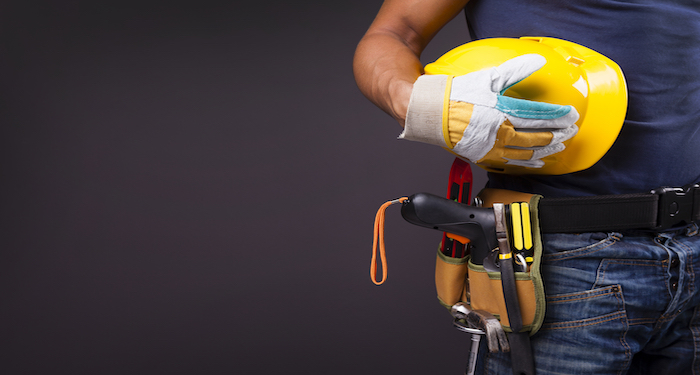
Electricians can charge in one of two ways: a flat fee for a specific job or an hourly rate that covers whatever they must do in each amount of time. Most electricians prefer to price for a specific job, but an hourly rate for an electrician provides a good cost benchmark.
We discovered that the average hourly rate in the UK is around £40 per hour, though this can vary depending on where you live, with London and the southeast being the most expensive.
Other factors, such as the tradesperson's experience, whether they are working with an apprentice, and so on, will also play a role.
If a job is likely to take a full day or more, an electrician may prefer to charge a day rate of around £200 or £250. The first hour is frequently more expensive than subsequent hours because travel time and taxes are factored in.
Many of us have no idea how much an electrician charges for a specific job or what their rate is. Although each company, as well as an electrician, will have their own price list for various jobs, it is a good idea to get an idea of how much they charge and how they build a quote for you.
This can help you figure out how much they're charging for labour, material costs, and whether you're being overcharged. Remember that you should not base your decision solely on price.
Electricians are highly skilled professionals, and the consequences of poor electrical installation can be fatal.
For an electrician in London, expect to pay around £75 per hour. Electricians in the south of England will earn slightly more than those in the rest of the UK.
There are many reasons why your electrician could increase the cost, such as distance. If the contractor must travel above a certain radius, they may charge an additional fee to cover the additional travel costs.
Unless you live in a remote area or want to hire an electrician from afar, you shouldn't have to pay for this.
Access issues inside the building lengthen the time on site and increase labour costs. For example, electricians frequently require access to floor and ceiling voids for certain jobs, and if these are inaccessible, the price rises.
If the loft is boarded up, rewiring issues arise upstairs. If the internal wall constructions are solid blocks, it will take more time to sink in new cables. Many problems like this can arise during various types of electrical work.
Size of the job: If an electrician charges by the hour, he or she may be able to provide a generally lower quote for larger jobs.
Emergency: If you need work done right away, an electrician will typically charge you extra.
How Long Does It Take to Install Smart Lighting?
Many people prefer to gradually invest in their smart homes, adding more items as their budget allows and their desires change. A smart bulb has an average lifespan of 15 to 25 years, or 15000 to 25000 hours, whichever comes first.
As a result, they can last for an entire phase of your life. Because they are made with LED technology, they can last for a long time but have shorter lifespans than non-smart LED bulbs.
If this describes you, smart lights are excellent additions to your home. They allow you to see smart home technology in action and decide whether to purchase additional gadgets.
Additionally, if you already have some smart items, lights will most likely complement them. In this section, we will go over how long it takes to install smart lighting and what factors can affect the installation time.
The type of smart lighting you decide to have has an impact on the installation. Smart bulbs, which screw into light sockets like regular bulbs, are available for purchase and installation.
Smart switches, on the other hand, may be a better option. They enable you to turn on lights by using a wall-mounted control or an app.
Smart bulbs are ideal for turning off or on a single light without entering the room. They're also one of the simplest solutions to install because, in most cases, you simply plug them in and sync them with apps.
Turn off all power to the light bulb and allow it to cool for a few minutes if it has been operating, especially if it is an incandescent or halogen bulb, which can become quite hot and cause injury if touched.
Spin the bulb to the left until it comes free of the light fixture. Place it cautiously on a surface that will not allow it to roll away.
It's time to put the new ones in:
- Take the new smart bulb out of its packaging.
- Insert the bulb base into the fixture and turn it clockwise until it clicks into place or begins to feel snug.
After you've installed your light bulbs in their fixtures, the next steps for connecting smart bulbs are standard across all brands. Different brands use different terminology and menus, but in general, the process should look something like this:
- Install the application. The instructions for installing the appropriate app will be included in the package.
- You must log in or create an account after installing the software app.
- To add a new device to the app, select "add a new device." The location of this will vary depending on the tablet or phone you are using.
- Turn on the light. It should blink a couple of times.
- To find the smart light bulbs, use the app's prompts or ask your smart speaker.
To install a smart bulb will take around 10 minutes, and having smart lighting fitted around your home will take around 1 hour as the electrician will have to ensure it is safe and everything is installed properly.
Types of Smart Lighting
There are numerous types of light bulbs on the market, so each smart lighting system would have its own selection.
Because of the versatility of smart lighting, you can control individual light bulbs, groups of light bulbs, or even the lights in an entire building.
You could programme lighting themes so that when you're watching a movie, the lights in the room dim except for the backlighting around your television.
Most smart light bulbs can be retrofitted to standard light fixtures, which means you simply need to find the appropriate cap and replace the current light bulb in its fitting.
Here we will go through the different types of smart lighting and what is involved, including their pros and cons, so you can decide what system is best for you!
Smart Light Bulb
At the most basic level, a single smart light bulb can be linked to an existing socket and then paired with your home's Wi-Fi system. This feature enables homeowners to control such individual bulbs via a smartphone app.
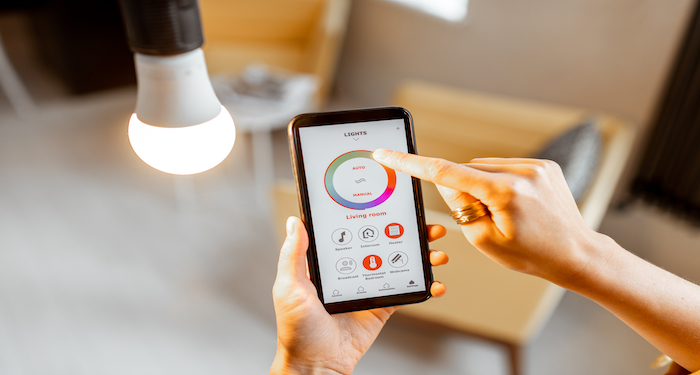
You can specify how many numbers of smart light bulbs to install and which rooms they will be most useful in. Various smart light bulb products include extra features such as adjustable brightness, programmable planning, and mood-based lighting schemes.
Pros
- Easy to install
- Affordable
Cons
- Doesn’t look as professional
Hub-Controlled Smart Lights
Hub-controller smart lights have a broader scope and can function as a whole-house smart lighting system. This type of smart lighting system must be carefully sourced to ensure compatibility with the smart home hub that you use.
In homes with a range of smart gadgets, incorporating hub-controlled smart lights could indeed enable a variety of applications. You can, for example, programme your smart lighting to change colours based on interior temperatures and even outside weather events.
Pros
- Can control several applications
Cons
- Must be installed carefully
- Larger
Smart Dimmer Light Switch
A smart dimmer light switch, which works by sending wireless signals via your home Wi-Fi or mesh network, is a replacement for a traditional built-in dimmer fixture on your wall.
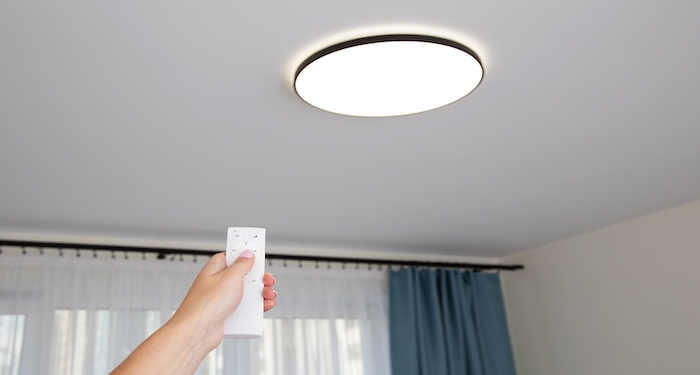
These switches control your light sources, ceiling fans, or anything else connected to that switch and can even adjust the brightness of your lights.
A smart dimmer light switch functions similarly to a standard light switch, except that it communicates wirelessly via a low-energy mesh network such as Zigbee or Z-Wave or directly via your home Wi-Fi network.
You can control your light switches using an app on your smartphone, voice control with Alexa or Google Assistant, or electronically on the switch itself.
For smart light switches, you wire each model into a variety of light fittings to ensure compatibility with a variety of standard bulbs.
Because there is typically no neutral cable in the UK, most smart switches are dimmers; to keep power flowing for smart control, smart switches do not turn off but merely dim bulbs to the point where there is no light coming from them.
That's the theory, and testing with different bulb types allows us to put it to the test: smart switches can have issues with some LED GU10 bulbs, either leaving them on forever or causing them to flicker.
App control is tested once more to see how quickly switches respond to commands. In addition, we test advanced features such as light scheduling.
Pros
- Works through WIFI
- Uses low energy
Cons
- Expensive
How Much Does It Cost to Remove Smart Lighting?
Several factors could influence the cost of removing smart lighting:
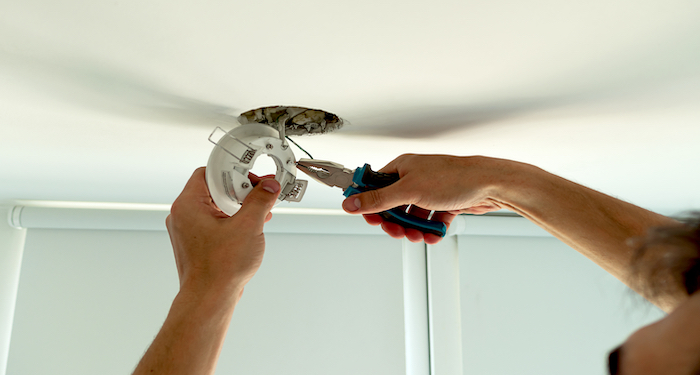
- How many switches need to be replaced: Most electricians charge a minimum of half a day's labour, so replacing just one light switch will not be cost-effective.
- Whether your electrician works in a pair: For safety reasons, many electricians work in pairs. The day rate for an electrician is around £225 – £250. Whether you're replacing, adding, or moving switches, replacing a light switch with a like-for-like replacement will save you money over installing a new switch.
Replacing a light switch with a like-for-like replacement usually costs around £75. Even though the job will only take about an hour, most electricians charge for at least half a day's work.
Replacing five light switches like-for-like, on the other hand, will cost around £100 and take two to three hours. As you can see, replacing more than one light switch at a time is much more cost-effective.
FAQs
Q: How does smart lighting work?
A: Smart lighting replaces traditional light bulbs with smart light bulbs that screw into your home's existing sockets. An internet-connected hub connects all of the bulbs, allowing you to control your home's lighting from a single location.
Q: Are smart lights worth the money?
A: Smart bulbs not only save energy and money, but they also last longer. Incandescent or halogen bulbs have a lifespan of about a year, whereas LED lights have a lifespan of about ten years.
While they are more expensive up front, you will end up replacing them far less frequently than incandescent bulbs.
Q: Do smart lights work without WIFI?
A: Smart lights, such as Philips Hue, will still work without an internet connection, as long as you don't try to control them while you're away from home. Hue uses a hub as an intermediary, which improves things if your internet goes down.
Q: What can smart lighting do?
A: Smart lights allow you to control a bulb remotely using an app on your phone, a smart speaker, or even by speaking to it. You can programme when the lights turn on and off, change the colour of a bulb, and come up with your own creative uses.
Q: What is the difference between smart lights and LED lights?
A: The distinction between smart lights and regular lights is straightforward: smart lights can be controlled via a physical switch, an app on your phone (iOS and Android), or a smart speaker such as the Amazon Echo or Google Home.

